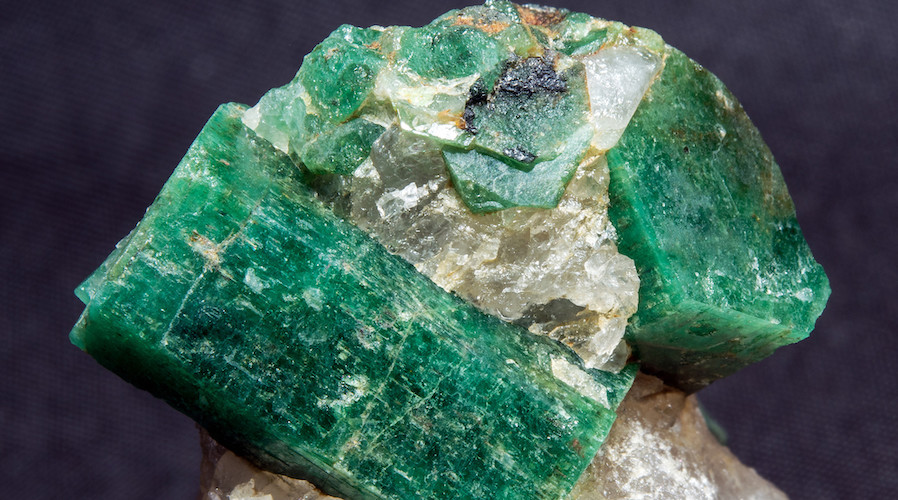Global S&T Development Trend Analysis Platform of Resources and Environment
| Nomads may have taken over Egypt’s emerald mines before the fall of the Roman Empire | |
| admin | |
| 2022-03-03 | |
| 发布年 | 2022 |
| 语种 | 英语 |
| 国家 | 国际 |
| 领域 | 地球科学 |
| 正文(英文) |  Beryl var. emerald. (Reference image by Géry Parent, Flickr).
New research by archaeologists from the Autonomous University of Barcelona and the University of Warsaw found that Roman Empire emerald mines may have fallen into the hands of nomads as early as the 4th century. Following two recent dig seasons at the site of Sikait, a set of buildings surrounding Roman Egypt’s emerald mines in the Eastern Desert, the scientists noticed that some of the buildings were occupied or even built by the Blemmyes, nomad tribes living in the area at the end of the 4th century. The work conducted at the main temple of Sikait, the Large Temple, also allowed the research team to document two perfectly preserved ritual sanctuaries, one of which contained the last votive offering to have been made intact, dating between the 4th and 5th centuries CE. The group also excavated one of the most impressive building complexes, the Tripartite Building, which was likely used both as a residence and as a warehouse for the emeralds extracted from the mines. Mapping the minesIn a paper published in the journal Thetis, the researchers explain that the dig seasons began with a topographical survey of the mining areas in which up to eleven extracting zones were found surrounding Wadi Sikait, the dry valley in which the archaeological site is located. For the first time ever, a detailed topographic study of the two most important mines was conducted. It showed that one of the mines consisted of hundreds of galleries and had a depth of more than 40 meters. The survey also allowed the team to determine that large-scale mining only began once the most productive veins were identified. According to Joan Oller Guzmán, who led the excavations, these operations included logistical infrastructures such as small settlements, necropolises, ramps, paths, working areas and watchtowers. This type of organization is a testament to the complexity and intensity of the processes needed to extract beryl, the mineral from which emeralds are obtained. The army was involvedFor Oller Guzmán and his colleagues, the most remarkable characteristic of these mines is an important set of ancient inscriptions which allow researchers to infer information on who worked there and how the tasks were distributed. Among the inscriptions there is one by a Roman legion, which would for the first time demonstrate that the Roman army was directly involved in the exploitation of Egypt’s emerald mines “not only to defend them but also probably to help in their construction,” Oller Guzmán said. In addition to these discoveries, the surveying of the area led the archaeologists to document dozens of new settlements, mines, infrastructures and even a necropolis with over 100 tombs, which has added to the knowledge of ancient funerary rites and social features of the community living there shortly before the site was abandoned. In the group’s view, the combined findings signify a huge step forward in understanding how emeralds were extracted and commercialized in the Graeco-Roman and Byzantine periods.
|
| URL | 查看原文 |
| 来源平台 | Minging.com |
| 文献类型 | 新闻 |
| 条目标识符 | http://119.78.100.173/C666/handle/2XK7JSWQ/347255 |
| 专题 | 地球科学 |
| 推荐引用方式 GB/T 7714 | admin. Nomads may have taken over Egypt’s emerald mines before the fall of the Roman Empire. 2022. |
| 条目包含的文件 | 条目无相关文件。 | |||||
| 个性服务 |
| 推荐该条目 |
| 保存到收藏夹 |
| 查看访问统计 |
| 导出为Endnote文件 |
| 谷歌学术 |
| 谷歌学术中相似的文章 |
| [admin]的文章 |
| 百度学术 |
| 百度学术中相似的文章 |
| [admin]的文章 |
| 必应学术 |
| 必应学术中相似的文章 |
| [admin]的文章 |
| 相关权益政策 |
| 暂无数据 |
| 收藏/分享 |
除非特别说明,本系统中所有内容都受版权保护,并保留所有权利。
修改评论